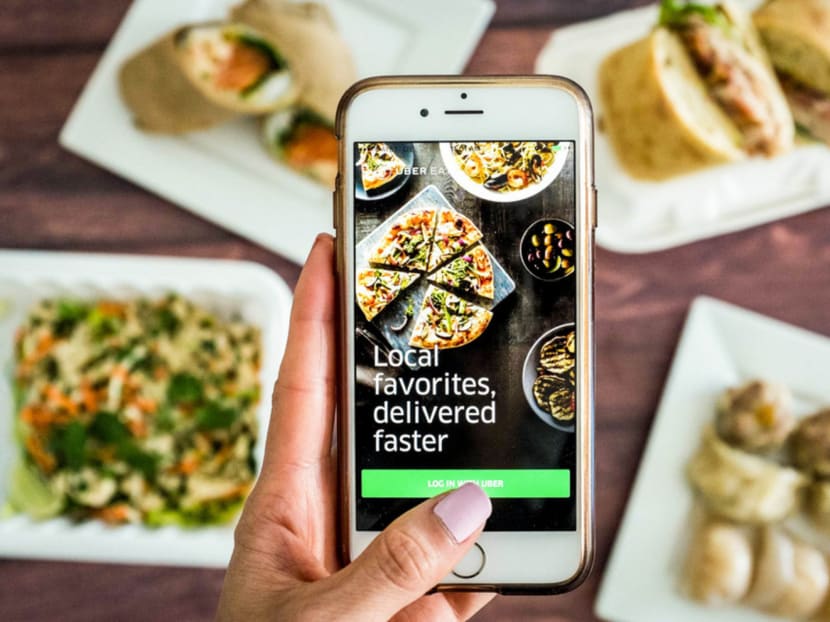Knives are out as competition in food delivery market heats up
SAN FRANCISCO — For years, Mr Bob Gordon, the owner of Footprints Cafe in Brooklyn, handled the delivery of his restaurant’s meals, like his Caribbean-inspired “Rasta Pasta”. So when he decided to work for the first time with an external delivery service — UberEats, the delivery arm of the ride-hailing giant Uber — he was nervous.
SAN FRANCISCO — For years, Mr Bob Gordon, the owner of Footprints Cafe in Brooklyn, handled the delivery of his restaurant’s meals, like his Caribbean-inspired “Rasta Pasta”. So when he decided to work for the first time with an external delivery service — UberEats, the delivery arm of the ride-hailing giant Uber — he was nervous.
Then, the orders started pouring in.
“We weren’t prepared for the volume that came in through UberEats this year,” 46-year-old Mr Gordon said. “I myself, as an owner, had to work three weeks straight cooking on the food line just to keep up.”
By winning over restaurant owners like Mr Gordon, Uber has barrelled into the crowded, cut-throat space of food delivery.
As its new chief executive, Mr Dara Khosrowshahi, assesses the strengths and weaknesses of the company with an eye towards an initial public offering in the next 18 to 36 months, top executives believe that UberEats could generate enormous growth.
Even as Mr Khosrowshahi grapples with issues such as Uber’s loss of its operating licence in London, he has said that UberEats has been a “wonderful surprise”, according to a person who has spoken with him.
UberEats stands out even from the rest of the company’s fast-growing — and unprofitable — business.
The delivery service, available in more than 120 markets globally, sometimes eclipses Uber’s main ride-hailing business in cities like Tokyo, Taipei and Seoul, the company said.
The number of trips taken by UberEats drivers grew by more than 24 times between March last year and March this year.
As of July, UberEats was profitable in 27 of the 108 cities where it operated. Uber declined to reveal the service’s revenue.
“There’s a global trend towards delivery,” said Mr Jason Droege, vice-president of UberEverything, the division under which UberEats operates.
“As people use mobile phones more and more for everything in their lives, we’re starting to see a change in how people eat.”
Uber came late to food delivery, which is a market worth over US$100 billion (S$136 billion), or about 1 per cent of the total food market, according to a study by McKinsey.
Typically, food delivery companies fall into one of two categories. The first is aggregators like Grubhub, which collect restaurant options and menus through an online portal for customers, and which usually require restaurants to handle delivery themselves.
The second is full delivery services like Postmates and UberEats, which take orders through an online portal and deliver the food for restaurants. The restaurants generally hand over a fixed percentage of an order as a fee, while customers also pay a fee to the delivery service.
The competition is stiff. Postmates, which established a foothold six years ago, has raised more than US$250 million. It also has more than 100,000 delivery drivers (the company calls them “postmates”) and makes 2.5 million deliveries every month. Grubhub, a public company, had US$3 billion in gross food sales last year with an active base of 8.17 million customers.
There is also the threat of Amazon, which has tried food delivery in a few markets. The Seattle retail giant’s recent acquisition of Whole Foods provides hundreds of potential bases for drivers to pick up prepared food for delivery in major urban areas, where takeout orders are popular.
“The number one concern for all of these delivery companies is Amazon,” said Mr James Cakmak, an analyst at equity research firm Monness, Crespi, Hardt & Co who follows the food delivery space.
“How could Amazon use its network to crush our business? They have the logistical network and the balance sheet to be able to compete on the price side with all of these players.”
Mr Matt Maloney, founder and chief executive of Grubhub, said his company’s focus on food orders set it apart. “Uber has built a great company focused on black car service and human transportation, but succeeding in food delivery is a different game,” Mr Maloney said.
“We are known for one thing only — take-out ordering — and we have engineered our entire product around this purpose.” THE NEW YORK TIMES







